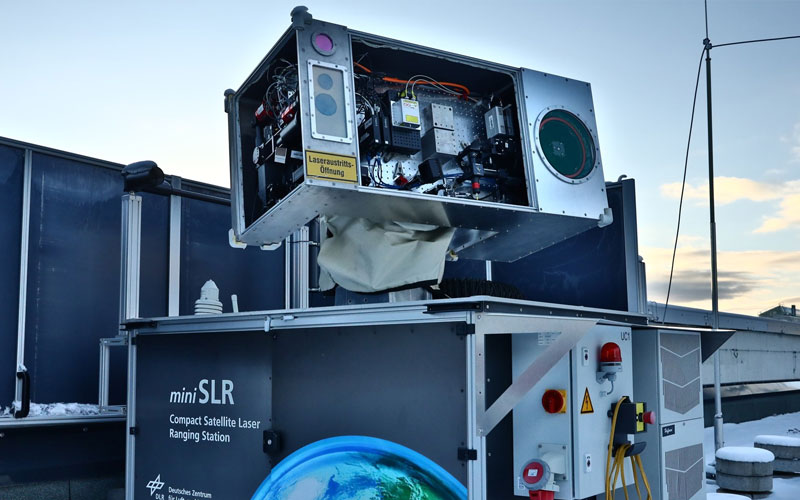
Following a year of testing, the German space agency DLR has validated that its miniaturized satellite laser ranging (SLR) solution is a realistic alternative to traditional solutions.
With SLR, a ground station fires a laser beam in short pulses at a target satellite in orbit. The beam hits the target and is reflected back to be detected by the ground station. The distance between the ground station and the target can then be calculated precisely based on the time it took for the laser to travel the distance.
Measurements from SLR systems are vital for fields like geodesy, the science of understanding the Earth’s geometric shape, orientation in space, and gravity field. Researchers use the precise measurements of satellite orbits to determine changes in Earth’s structure and rotation.
Traditionally, SLR measurements were only possible with large ground stations equipped with powerful lasers, a telescope with a diameter of between 50 and 80 centimetres, and a team of operators. However, with its miniSLR project, DLR set out to change that.
The miniSLR system was developed by a small team at the DLR Institute of Technical Physics in Stuttgart. It is a fully enclosed system measuring 1.8 metres long, 1.3 metres wide, and two metres high with a mass of around 600 kilograms. It can be transported anywhere on Earth and requires only a stable surface, power, and an internet connection. While the system is currently being operated manually, DLR plans to enable miniSLR ground stations to operate autonomously, which will significantly reduce operating costs.
“To keep the system as small and compact as possible, we use a diode-pumped solid-state laser. It has the necessary power but does not take up as much space,” explained DLR researcher Wolfgang Riede. “That is a decisive factor because the telescope of the miniSLR is also smaller. Without a powerful laser, we would otherwise not get enough of the laser light back to be able to conduct successful measurements.” The miniSLR system is equipped with a telescope with a diameter of only 20 centimetres.
During 2023, the miniSLR project team carried out measurements of several satellites and then compared this data with measurements taken from 35 conventional SLR stations. According to DLR, “researchers have shown that their prototype works in a realistic environment.”
Moving forward, the miniSLR team will continue to work on further optimizing the system with the aim of going to market with an industrial partner to launch small-scale production. The team estimates that the system will cost between three and five million euros.

